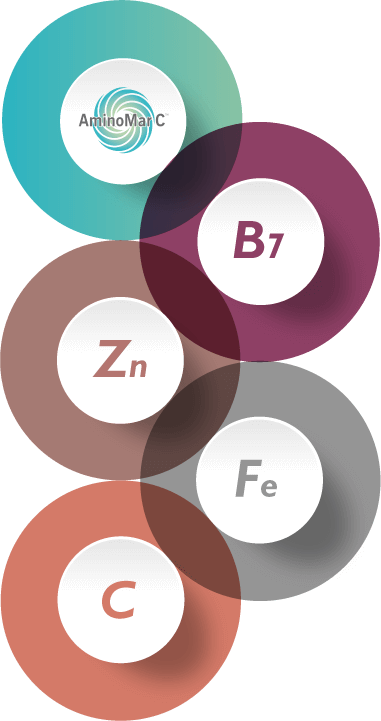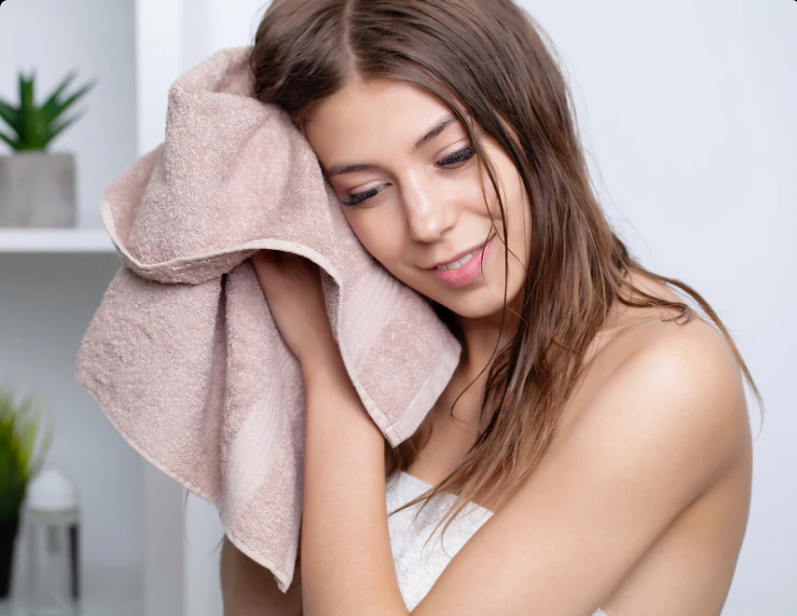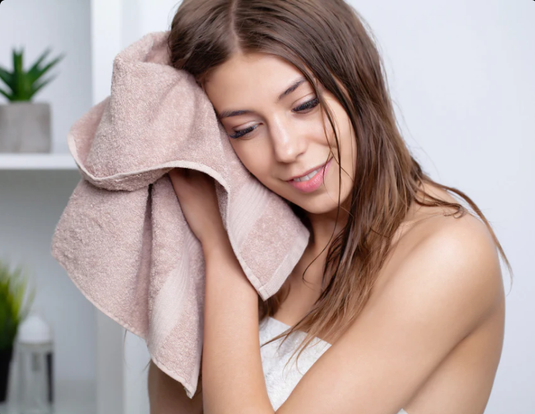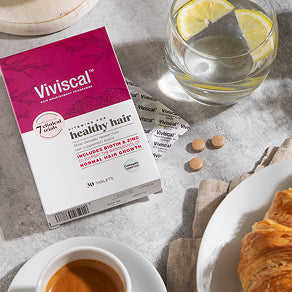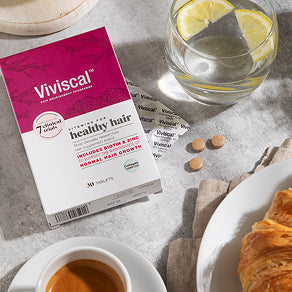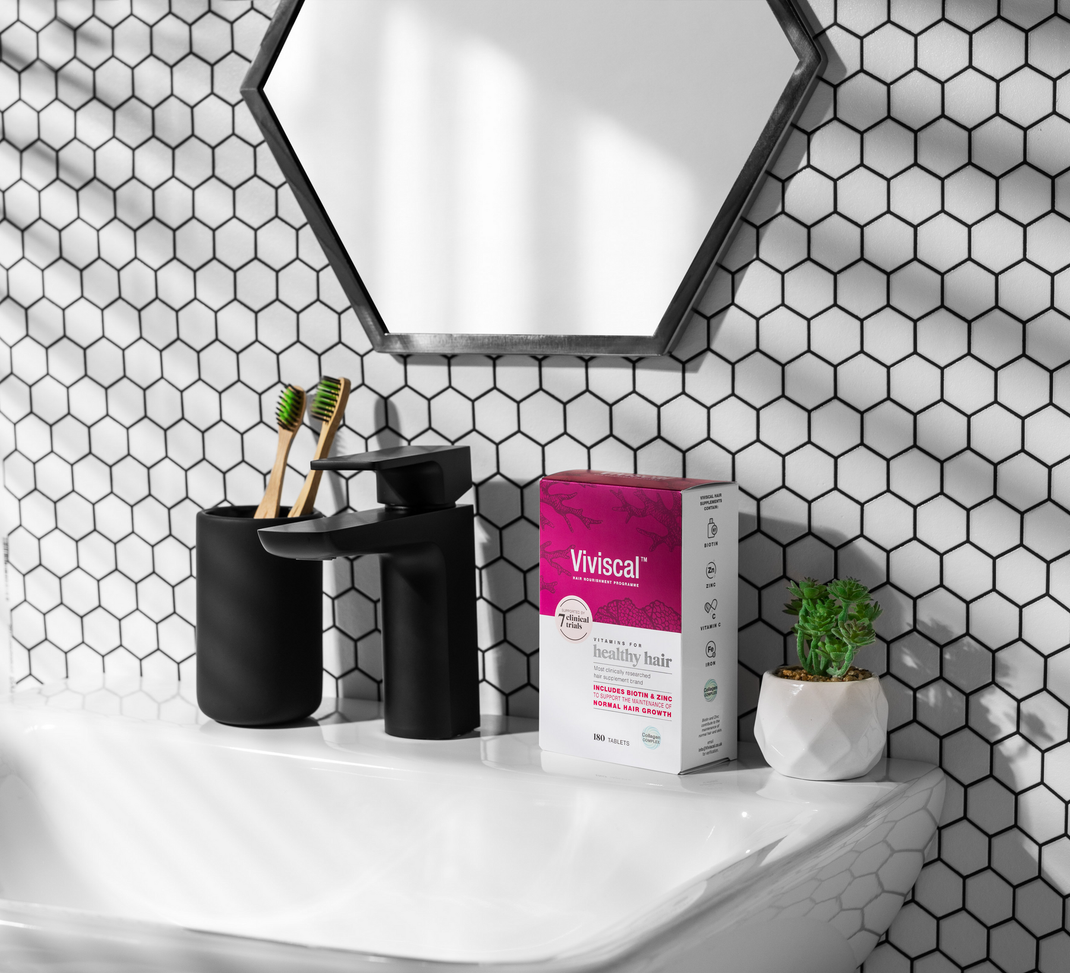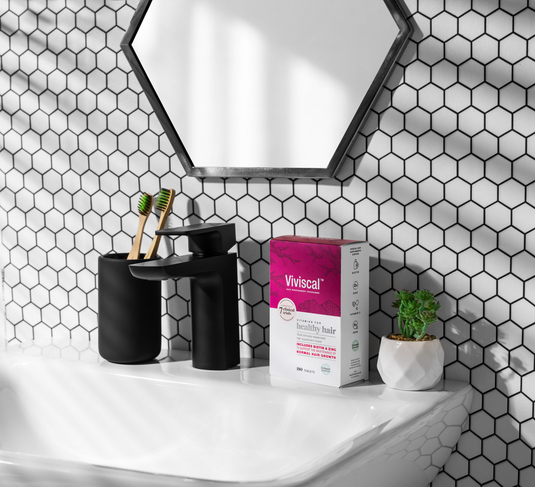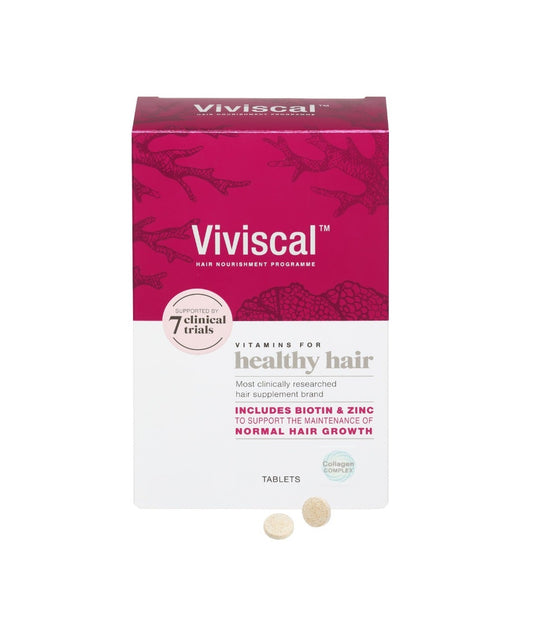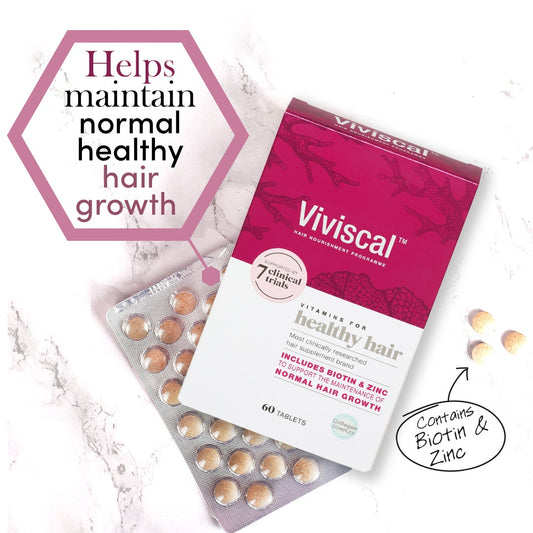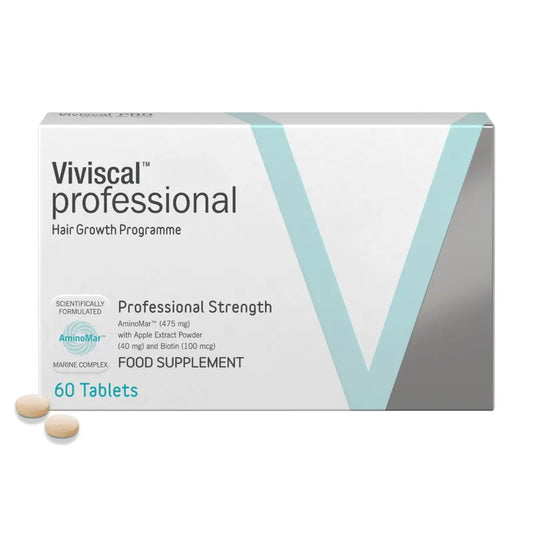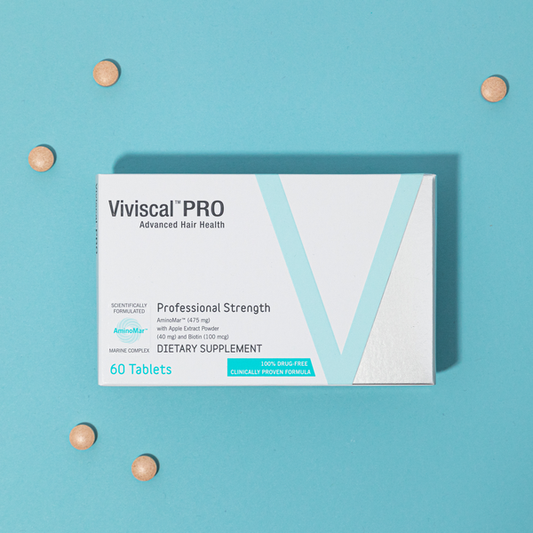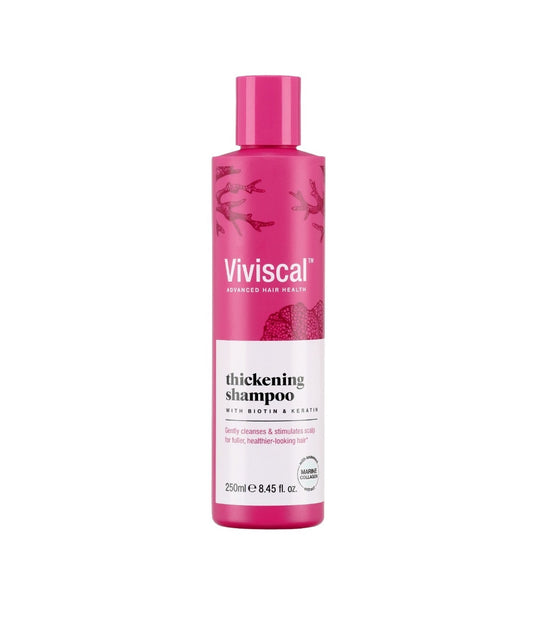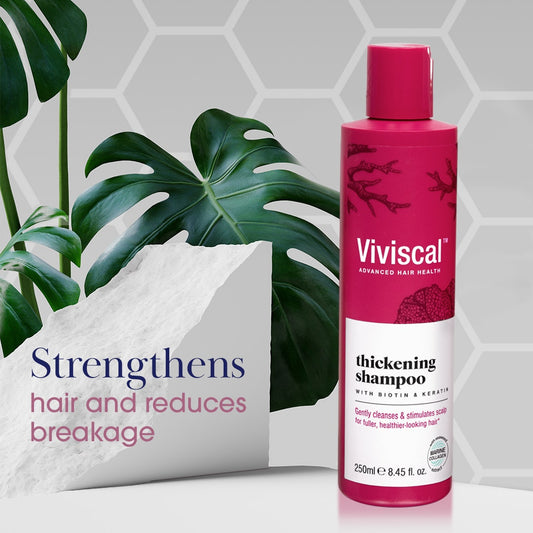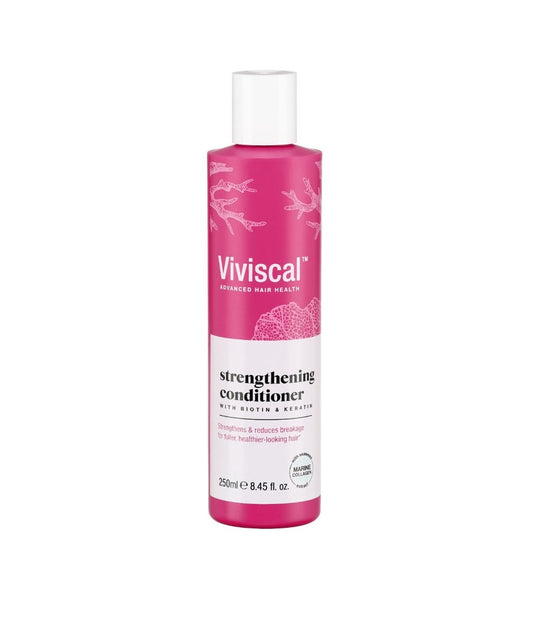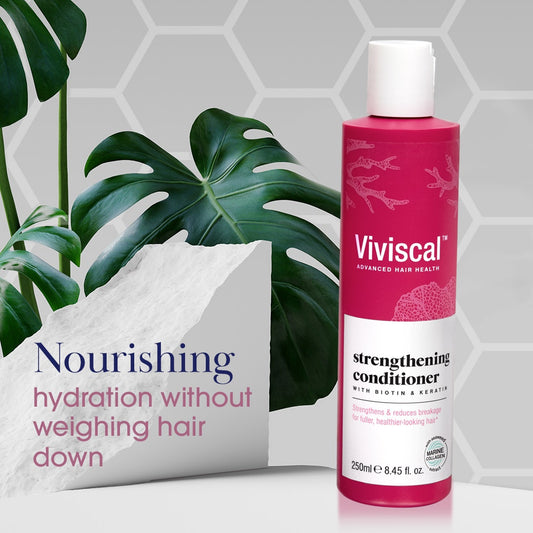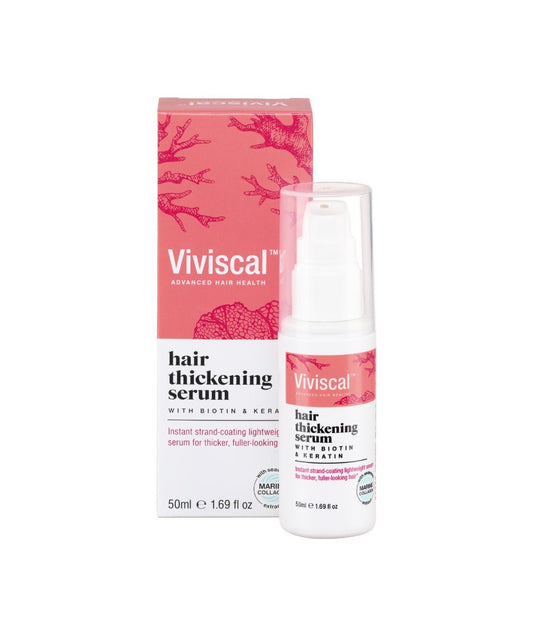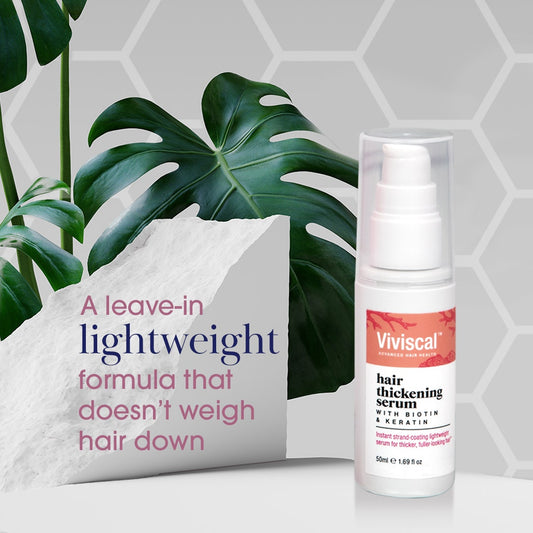The A-Z of Hair Growth Vitamins
A number of hair growth vitamins are said to play a part in hair health. Everything from vitamin A through to zinc promotes a fuller-looking mane. But, with so many options, how can you know which ones to take? And which ones actually work?
If you’re looking for a comprehensive guide to what the different vitamins for hair growth do, you’ve come to the right place. Read on for a no-nonsense rundown of which vitamins – from A to Z – are worth taking for healthier, fuller hair and which should be supplemented naturally in your diet.
What are the main hair growth vitamins and minerals?
A - AminoMar C.™
Although it has been claimed that vitamin A helps with hair growth, if you take too much of it, it may actually cause hair loss.
Inside vitamin A are compounds including retinol and retinoic acid which, if used in excess, can cause damage to your hair. As a result, there’s no reason to supplement vitamin A unless you have a known deficiency. Besides, there’s always the option to just eat vitamin A-rich foods such as kale, spinach, carrots, sweet potatoes and pumpkin.
Instead of vitamin A, we’ve opted to start with something very special of our own: AminoMar C.™ This compound is a rich marine protein complex. It originates from research in Scandinavia and is unique to Viviscal. Back in the 1980s, a professor from Scandinavia conducted a study on the diet of the Inuits, finding that their great hair and skin came from a diet rich in fish and protein. So, he isolated the molecules from their diet and formed AminoMar C™ – the ideal compound for hair health.
You won't find AminoMar C™ in any other supplement. It's unique to Viviscal and is one of the key ingredients in our vitamins to strengthen hair and help hair growth.
B – vitamin B & biotin
Is vitamin B a hair growth vitamin? Yes, it is! Included in vitamin B are eight different substances:
- Thiamine (vitamin B1)
- Riboflavin (vitamin B2)
- Niacin (vitamin B3)
- Pantothenic acid
- Vitamin B6
- Biotin (vitamin B7)
- Folic acid (folate)
- Vitamin B12
But do they all help? Biotin is by far the most effective subcomponent of vitamin B as it is used in the regular production of keratin for hair, skin and nails. Biotin also has many other health benefits. As a result, a biotin deficiency can cause brittle nails, hair loss, hair thinning and even skin rashes.
Biotin functions by helping to create red blood cells. These are needed to carry oxygen and nutrients in your blood to the hair follicles on the scalp (where hair is produced). Biotin also helps produce keratin, the core component of hair. Biotin is found naturally in dairy products, eggs, almonds, bananas and sweet potatoes.
The effectiveness of biotin was proved in 2012 during a study of women with self-perceived thinning hair. Half the women were (unknowingly) given placebos and the other half were given biotin. No significantly improved results in hair thickness were detected with the placebo, but, after six months, those taking biotin reported an increase in hair volume, thickness and scalp coverage.
However, the biotin supplement they were given also contained iron and zinc (we’ll get to these). So, it is important not to solely rely on specific hair vitamins for growth.
C – vitamin C
Vitamin C is a powerful antioxidant that helps to protect against ‘free radicals’ (harmful molecules that can damage hair) and absorbs other useful nutrients such as iron.
Vitamin C also contributes to the formation of collagen, a substance rich in amino acids that help strengthen hair follicles. Collagen promotes the healthy functioning of the skin – including the all-important scalp. You can find it in citrus fruits, along with peppers, strawberries and broccoli.
I – iron
Iron is an important component when it comes to hair growth. If you understand the hair growth cycle, you’ll understand why iron is so crucial.
At all four stages of the hair growth cycle (anagen, catagen, telogen and exogen), hair is ‘fed’ by blood vessels at the base of each follicle. These blood vessels provide the nutrients needed for the follicles to grow hair.
Iron plays a significant role in the body’s production of haemoglobin. The main function of haemoglobin is to help carry the oxygen in your blood needed for cell growth and repair. As such, iron literally feeds the roots of your hair! Unfortunately, iron isn't easily absorbed into your body naturally – this is why people suffer from iron deficiency or anaemia (in serious cases).
As a result, if you are lacking in iron, it is important to eat iron-rich foods such as nuts, brown rice, tofu, spinach and eggs while taking supplements.
K – keratin
Next, we have keratin. While this isn’t explicitly a vitamin (in the way that vitamins C and B are), it is essential for hair health and features heavily in hair growth supplements.
Keratin is the core protein in hair, skin and nails and is organically produced by the body. Many people who use keratin products on their hair report that it feels smoother and stronger. Essentially, keratin smooths down the overlapping cells in your hair strands. This allows these layers of cells (the hair cuticles) to absorb the keratin and experience greater levels of smoothness.
Z – zinc
Lastly, we have zinc. This component specifically contributes to the maintenance of normal, healthy hair by nourishing hair, skin and nails.
One of its main benefits is its assistance in tissue growth. It can also help with the regulation of the oil glands in the scalp – namely, ensuring they produce sufficient levels of sebum to hydrate the scalp and nourish the hair. If you are looking to add more zinc to your diet naturally, it is commonly found in spinach, lentils and pumpkin seeds.
One vitamin for hair growth
What if we told you there was one vitamin that could do it all? Instead of trying to find the right balance of all the above yourself, what if there was a simple, all-in-one solution?
Here at Viviscal, we offer clinically researched, simple-to-take vitamins to help hair growth. We pride ourselves on making men’s and women’s hair health goals achievable, thanks to supplements designed to strengthen hair.
Filled with all the vitamins and minerals listed above in balanced quantities, Viviscal's vitamins provide a boost for hair growth and thickness. Simply take the supplement twice a day with food and expect to see thicker, stronger, healthier hair after three months.
To find out more about our all-purpose hair vitamin, contact us today. Or read our user stories to find out why so many people recommend us.
Use a Volumizing Shampoo & Lightweight Conditioner
How do I get more volume in my thin, fine hair? We get this question a lot at Vivisical™! Many women, especially those over 40, struggle with thinning hair and lack of volume. But don’t worry – we’ve got you covered with expert tips and tricks to add volume to thin hair. Whether you’re dealing with age-related hair thinning or naturally fine strands (or both!), these tips will help you achieve fuller-looking, more voluminous locks.
Understanding Thin Hair
Before diving into solutions, let’s address why some of us have fine or thin hair:
Genetics – Your DNA largely determines your hair type. If you have a parent with thin hair, you’re much more likely to have thin hair yourself.
Aging – Nearly everyone experiences some hair loss with age. Plus, hair follicles can shrink with age, leading to finer hair.
Hormonal changes – Pregnancy, menopause, and thyroid issues can affect hair thickness.
Nutritional deficiencies – Lack of certain vitamins and minerals can impact hair health.
Stress – High stress levels can lead to temporary thinning.
Thin hair presents unique styling challenges, like:
- Lack of body and bounce
- Difficulty holding styles
- Appearing flat, especially at the roots
- Becoming greasy more quickly
But don’t despair! You can transform the appearance of thin or fine hair with the proper techniques and products.
15 Secrets to Add Volume to Fine & Thin Hair
Before diving into solutions, let’s address why some of us have fine or thin hair:
1. Use a Volumizing Shampoo & Lightweight Conditioner
How do I get more volume in my thin, fine hair? We get this question a lot at Vivisical™! Many women, especially those over 40, struggle with thinning hair and lack of volume. But don’t worry – we’ve got you covered with expert tips and tricks to add volume to thin hair. Whether you’re dealing with age-related hair thinning or naturally fine strands (or both!), these tips will help you achieve fuller-looking, more voluminous locks.
2. Skip the Towel
When drying freshly washed hair, a regular cotton terry towel can rough up the cuticle and cause breakage to fragile, wet hair. Instead, gently wrap hair in an old T-shirt or a bamboo hair wrap designed to absorb moisture without damaging it.
3. Choose a Thickening Serum
After you’ve washed your hair, apply a lightweight leave-in product like Vivisical™ Hair Thickening Serum. Vivisical™ Hair Thickening Serum coats each strand to reduce frizz, leading to thicker, fuller-looking hair^^. Whether you air dry or blow dry your hair, this is a great addition to your routine.
^^Use in conjunction with Vivisical™ Thickening Shampoo and Strengthening Conditioner
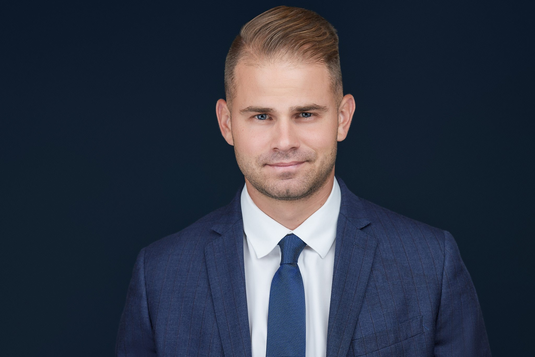
Vivisical™ has been researched, and in just one of the many studies, the people who took this supplement had more hair after taking it three months, and less hair shedding.
-Dr. Brian Heil, Doctor of Trichology
Frequently Asked Questions
How do I get more volume in my thin, fine hair?
To add volume to thin, fine hair, start with a volumizing shampoo and conditioner. Use styling products like mousse or root-lifting spray on damp hair, then blow-dry hair upside down for maximum lift. Finish with a texturizing spray or dry shampoo to add body and grip to your style.
How can I make my thin hair look thicker?
To make thin hair appear thicker, opt for a cut with long layers that create movement without losing much fullness. Use thickening products that coat the hair shaft, and consider strategic coloring techniques like highlights and lowlights to add depth and dimension. Styling hair with textures such as waves or curls can also make hair look thicker than sleek, straight styles.
How do I get more volume in my thin, fine hair?
To combat flat hair on top, apply a volumizing root spray to damp roots before blow-drying. Use the “twist and clip” method: twist sections of damp hair, clip them to your head, and let them dry for added lift. Additionally, try changing your part or using a zigzag part to create instant volume at the crown.
